London Waterloo: Inside the shopping centre that's almost deserted
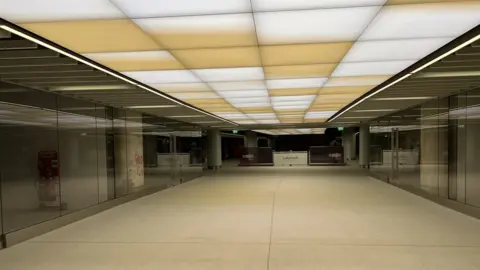 BBC
BBCThere is an eerie silence in a shopping centre beneath London Waterloo, the station from which Eurostar trains once whisked people from the capital to mainland Europe.
It's not because Waterloo isn't bustling with passengers. Although the railway station lost its status as the UK's busiest during the pandemic, millions of people still use it every year.
London's notorious rush-hour urgency is evident as commuters push past one another.
But when stepping down from the main concourse past platform 19 to The Sidings, the station's subterranean retail complex that opened earlier this year, it's a different story. On the Tuesday morning I visited, workers in hi-vis jackets and hard hats outnumbered the people using the limited facilities.
Most of the shops sit empty. It's a far cry from Waterloo International's heyday in the 1990s.
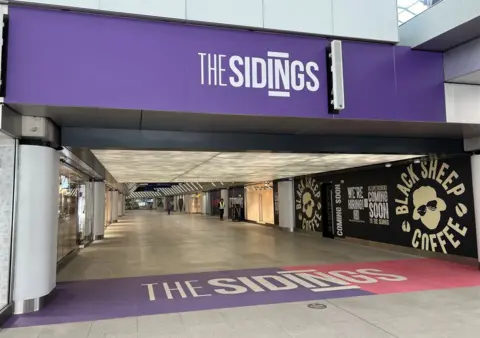
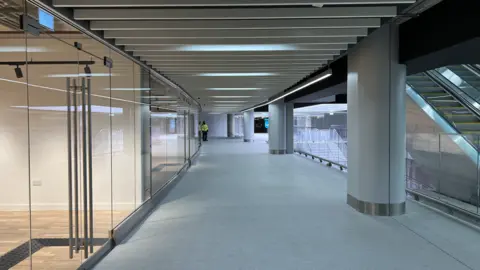

"The elegant glass and steel building which snakes 400m through central London has won widespread praise," reported the Guardian after the terminal won the Royal Institute of British Architects' most prestigious annual award in 1994, the year it opened.
"Waterloo International looks like a 1950s vision of the future, with its curving passenger concourse and exposed steel and glass fittings," the Independent gushed. "Even the baggage-carts sport flared wheel-guards reminiscent of mid-century styling. You almost expect to see chrome fins rising majestically from the sleek Eurostar locomotives."
A "long, airport-style departure lounge houses all the usual shops: WHSmith, Upper Crust, Tie Rack", the Daily Mail approvingly said of the "customer-friendly terminal".
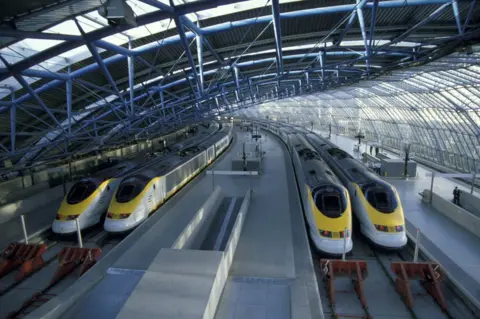 Construction Photography/Avalon/Getty Images
Construction Photography/Avalon/Getty ImagesIn 2003, celebrities including Ulrika Jonsson, Anthea Turner and Sir Stirling Moss were on hand to help launch Eurostar's "express" service linking Waterloo and Gare du Nord stations.
But some 13 years, 81 million passenger journeys and seven million sandwich sales after opening, the high-speed rail link moved north of the river to St Pancras International in 2007, where it remains.
Trains stopped using the platforms, except when The Railway Children was staged here in 2010, although London Fashion Week did use the platforms as a catwalk in 2011.
 John Phillips/Getty Images
John Phillips/Getty ImagesIn recent years, platforms 20 to 24 started hosting South West Railway trains serving destinations such as Reading, Bracknell and Winnersh. It is Waterloo International no more.
The transformation below the platforms, where some 20 million annual visitors were predicted to flock, hasn't yet happened.
There is a long list of shops under a "coming in 2022" banner but, aside from a few of the usual suspects - Costa, Pret, WHSmith - there is little else.
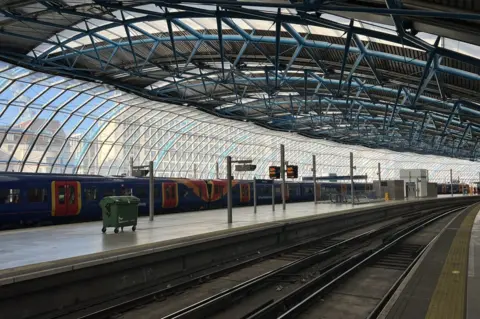
So why are shoppers staying away from this prime site in the heart of the capital?
"Cleanest toilets on the railway system," remarks one online commenter, ruling out hygiene issues as a possible explanation.
Securing construction materials, and labour and challenges relating to rising inflation, which have affected the whole sector, are thought to be factors behind the low occupancy rate.
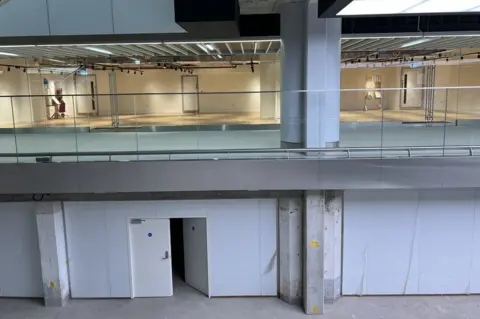
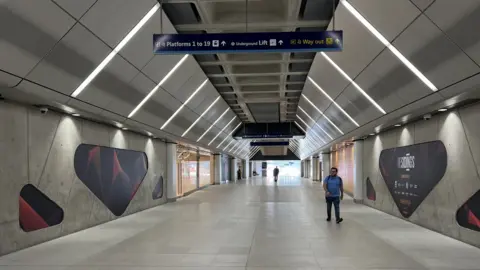
More shops are expected to open during the next six months, according to London and Continental Railway Limited (LCR), which is owned by the Department for Transport and specialises in redeveloping land in and around railway stations.
Nigel Crainey, chief operations and transformation officer at LCR, said: "The Sidings is a unique new experience-led destination in the heart of one of London's busiest transport hubs.
"BrewDog will be joined by Labyrinth, a ground-breaking immersive theatre experience that will showcase its Olivier Award-nominated Alice's Adventures Underground within a specially converted 46,000sq ft (4,275sq m) basement."
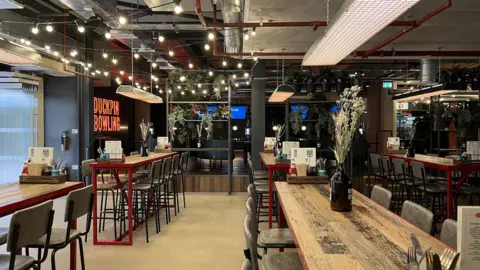
The BrewDog pub here was the only place that did seem to have regular footfall - even at 9am on a Tuesday, when I wandered in. According to LCR, it can accommodate up to 1,700 people at a time and welcomed about 20,000 visitors on its opening weekend in August.
However, most of the customers arrive from one of its entrances on the street and not from the shopping centre itself.
"Everyone is talking about here but not The Sidings," says Billy Martin, duty manager at the pub, which is the largest one owned by the controversial company.
"It's a little bit hidden."
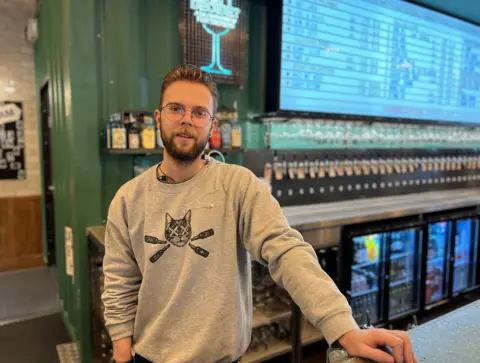
This BrewDog boasts a speakeasy, coffee shop, podcast studio, table-tennis tables and duck-pin bowling, as well as co-working spaces.
"Certainly for after-work drinks on a Thursday, you can't move in here," Billy says.
It's not an exaggeration to say there is more variety inside BrewDog than in the rest of the shopping centre combined, although LCR promises a "mix of experiential and of vibrant independent brands will help The Sidings to deliver one of London's most unique destinations".
So what does Billy think the future holds for the shopping centre?
"I just hope it gets busier," he says.
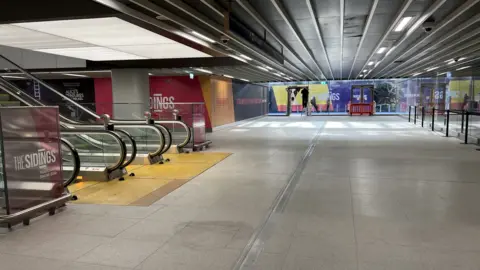

Follow BBC London on Facebook, Twitter and Instagram. Send your story ideas to [email protected]

All images subject to copyright
